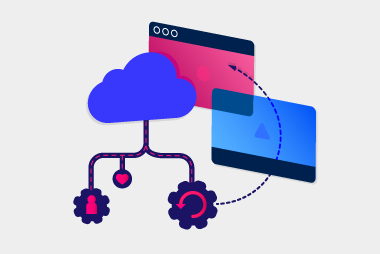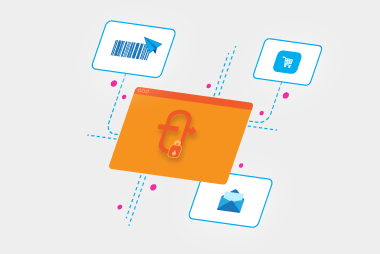Why is digital transformation important in 2022?
It enables us to pivot quickly
In the pre-COVID era, organisations were slowly transitioning to more digital business models but as the pandemic hit, it forced dramatic changes within companies and accelerated investment in digital transformation. All of a sudden business started operating remotely. They turned to various digital platforms to streamline internal business processes in order to function to serve their customers. This paradigm shift brought by the Coronavirus made the business world realise that in order to stay competitive and meet the increasing customer demand, going digital is essential. Many of our supply chain customers turned to us for help to streamline their business process during this period. With our cloud-based EDI, we helped our customers get everything onto their accounting software where everyone can access everything remotely. With cloud-based SaaS EDI, the software is hosted in the cloud and managed by a third-party service provider, in this case it’s us. Cloud EDI is web-based and is convenient as companies’ don’t need physical on-site infrastructure, additional resources or licenses. The cloud EDI service provider maintains the software, networks, servers, security and importantly the maintenance for you. It was the companies with cloud-based EDI that companies could transition most smoothly to working from home without interruption to their supply chains.It reduces the risk of errors and improves customer experience
Customer experience is increasingly becoming key to a company’s long-term success. Digital transformation can help businesses have more agile capabilities both in terms of IT services and user experience. MessageXchange can help you improve your customer experience by reducing the risk of errors by using EDI. With EDI, processes are automated reducing manual errors. For example, when a buyer places a purchase order (PO), and the order can be put into the supplier’s system. The supplier can raise an invoice in their software, which can be sent automatically to their customer’s software. Without EDI, all these processes would be manual which increases the risk of errors. Fewer errors mean a reduction in the number of disputes lodged as a result of accuracy. Businesses can increase customer satisfaction and loyalty by making things easier and faster with more streamlined digital processes.It makes for more productive employees
With the impact of COVID-19, companies are not sure if their employees will fully return to the office. It is a constant challenge to manage a dispersed workforce. Digital platforms can help managers create productivity improvements and help their employees stay motivated and be more effective in their roles. For departments like finance and HR, digital transformation provides an excellent opportunity to move from traditional paper-based processes to modern automations in areas such as payroll and eInvoicing. With our eInvoicing service you can send eInvoices to your customers almost instantly and be up-to-date on the status of the invoices through the eInvoice response message to see if your customer has received the eInvoice, whether it’s been approved and submitted for payment. These automations free up employees’ time by reducing the need for follow up calls and emails and give them an opportunity to focus on more important tasks.It’s so much more sustainable
Corporate social responsibility is becoming a necessity, not a choice these days. Many multinational companies are already focusing on sustainability and finding new ways to make their businesses more sustainable. Research by Forest ethics highlighted that Australian businesses and families use over 2.4 million tonnes of paper for printing and writing every year. Every tonne of paper needs 12-24 trees to manufacture. It is estimated that 180 trees are used for just one business each year. eInvoicing cuts out the need for paper as the invoices are exchanged electronically. Going digital is a good first step to make your business more environmentally friendly. Paperless communication and transaction mean practically no use of paper and energy used in production and transportation of paper documents. If you want to learn more about how EDI and eInvoicing can help your business smoothly transition and adopt digital processes, request a call back from our experts below.Request a call
Chat with one of our experts
Just fill out your details below and we'll be in touch within one business day.

